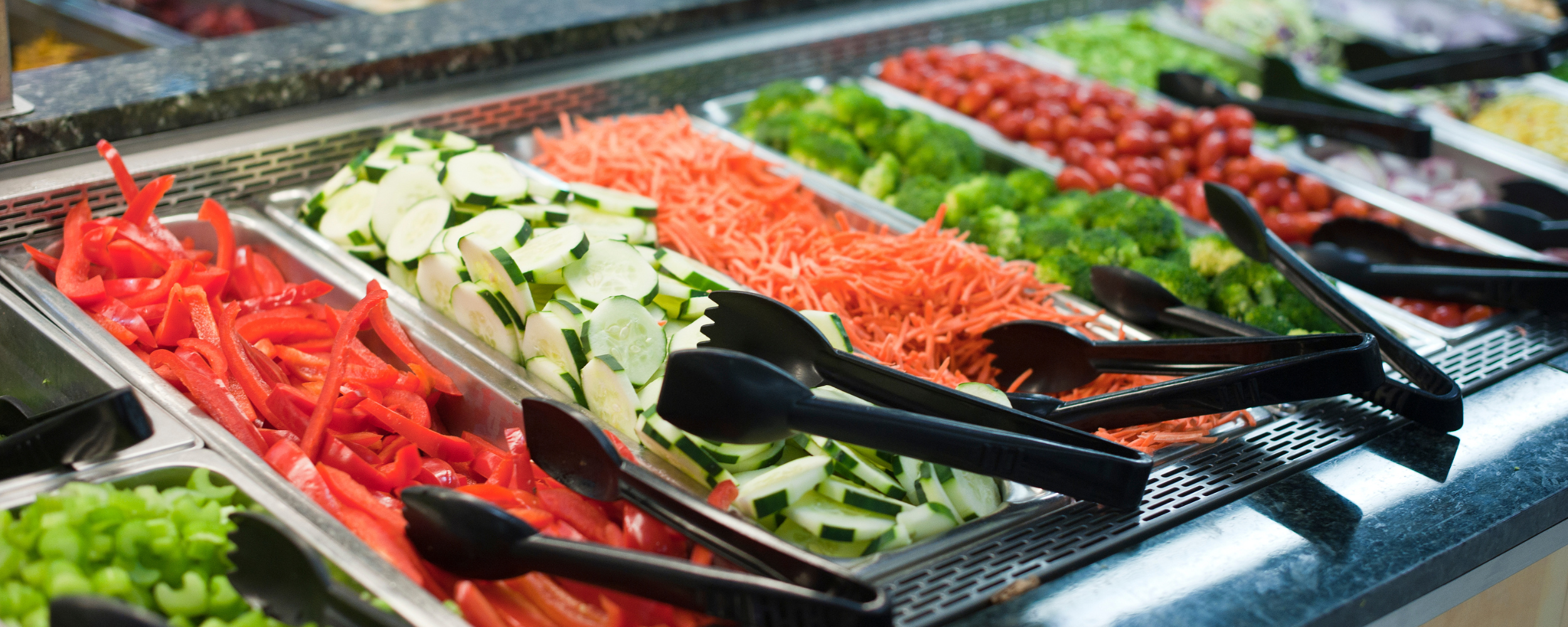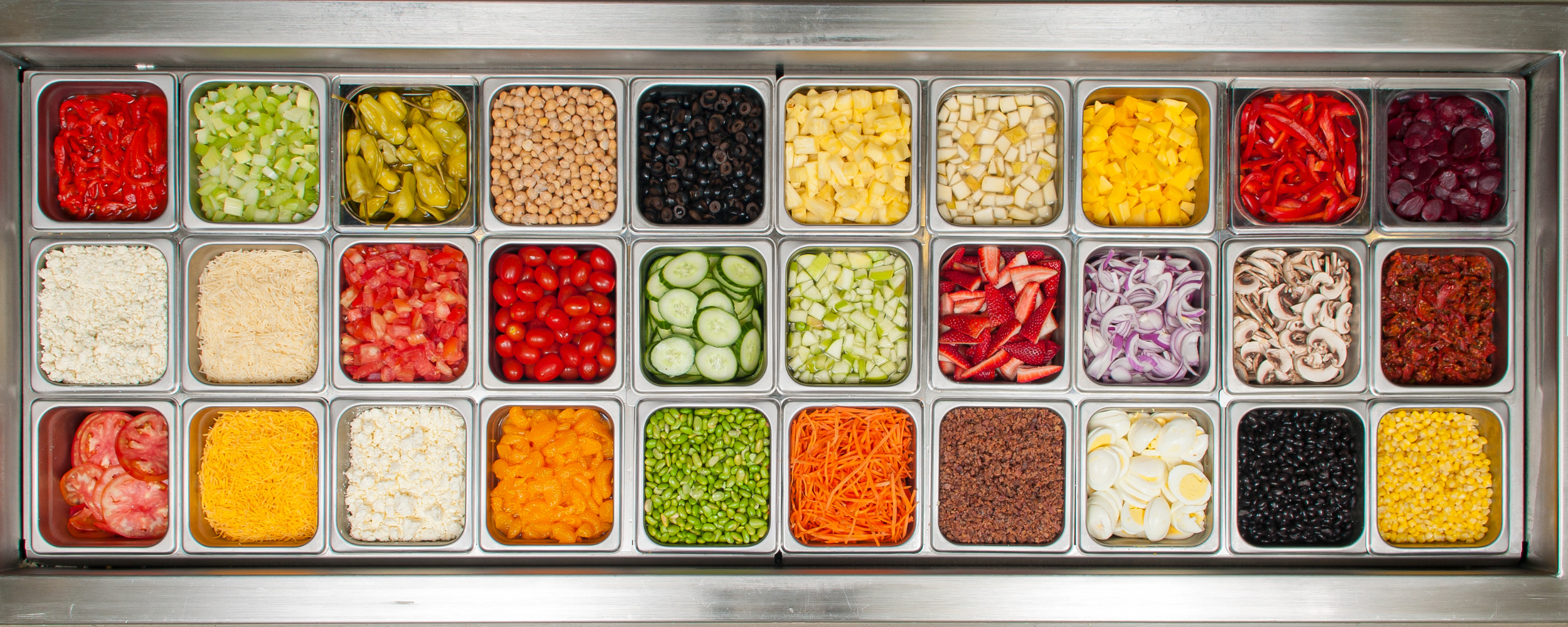Food Pan Buying Guide - Stainless Steel
Posted by CHERIE THOMPSON

Food pans, inserts, steam table pans, hotel pans, counter pans, service pans, gastronorm...What you call them depends on where you trained and who trained you, but they all mean the same thing. Designed to hold food hot for service in steam tables and chafers, these pans are also used for baking, roasting, poaching, freezing and more. Perforated versions are useful for draining, steaming and quickly cooling down foods. Because of their multiple sizes and ability to move from fridge to prep line, to holding cabinet and on to service, their use has permeated commercial kitchens.
The standardized measurements of these pans make it easy for chefs to custom build their service tables. Between brands, there might be slight variations in measurements as some include the lip and some don’t, but all are designed to be used the same way and interchangeably.

Food Pan Pan Sizes
The pan size or name is based on the width and length of the pan and is just a measurement of its size compared to a full size pan. A half pan is half the size of a full pan. A third pan is 1/3 the size of a full pan, or another way to think about it? It takes three 1/3 pans to make a full pan. Remember to use adaptor bars when building your configurations as the lips of the pans rest here, providing extra strength and stability and keeping the pans in the right place.

Here’s a quick reference chart for configuration options.

Food Pan Depths
Added to many configurations possible based on pan size, there is also a choice of depths. Depths of pans are an important consideration when determining which one works best for your needs. Consider your equipment – oven rack heights, steam table/hot table depth and even holding cabinet size. Volume of the pan should also be considered. The most common depth is 2.5” followed by 4” and 6”, however other depths are available.

Food Pan Volumes
The chart below shows the standard measurements and volumes (also called capacities) for stainless steel food pans. As mentioned earlier, there will be a slight variation between manufacturers, but as they are all based on standard measurements, food pans between manufacturers can be used interchangably.
The volume of the food pan is the measurement of what it will hold filled to the brim/lip. Keep in mind, that if you plan to use a lid, the volume it can safely hold without spilling over when you add the lid will be lower than the to-the-brim volume.
| Food Pan Size | Width x Length | Depth | Volume |
| Full | 12 3/4" x 20 3/4" | 1.25" | 4.2 qt |
| 2.5" | 8.2 qt | ||
| 4" | 14.8 qt | ||
| 6" | 21.2 qt | ||
| 2/3 Size | 12 3/4" x 13 3/4" | 2.5" | 6.3 qt |
| 4" | 10.1 qt | ||
| 6" | 15.7 qt | ||
| Half Size | 12 3/4" x 10 3/8" | 1.5" | 3 qt |
| 2.5" | 4.3 qt | ||
| 4" | 7 qt | ||
| 6" | 10.6 qt | ||
| Half Long | 6 3/8" x 20 1/2" | 2.5" | 5.2 qt |
| 4" | 8.3 qt | ||
| 6" | 12.5 qt | ||
| 1/3 Size | 12 3/4" x 6 7/8" | 2.5" | 2.6 qt |
| 4" | 4.5 qt | ||
| 6" | 6.4 qt | ||
| 1/4 Size | 10 3/8" x 6 3/8" | 2.5" | 2.2 qt |
| 4" | 3.1 qt | ||
| 6" | 4.6 qt | ||
| 1/6 Size | 6 1/4" x 6 3/8" | 2.5" | 1.2 qt |
| 4" | 2.1 qt | ||
| 6" | 2.8 qt | ||
| 1/9 Size | 4 1/4" x 6 7/8" | 2.5" | 0.8 qt |
| 4" | 1.1 qt |
Stainless Steel Gauges for Food Pans
Stainless steel is a hard metal that is easy to clean, resists scratches and dents and allows food to move from hot to cold or freezing to hot temperatures without damaging the pans.
Stainless steel pans are available in a range of gauges. Gauge, given a number rating, is a measure of the steel’s thickness. The lower the number, the thicker the stainless steel. For example, 22 gauge is thicker than 25 gauge.
There are advantages and disadvantages to consider before choosing which gauge best suits your operation. Lower gauge (thicker) stainless steel has increased durability, heats more evenly and resists dents and warping however it is heavier, takes longer to heat up and is more expensive. Higher gauge (thinner) stainless steel is lighter weight and less expensive but is more likely to scratch, dent and warp.
Food Pan Features to Consider
Anti-jamming
Built into the design with lugs in the corners make the pans easy to pull apart when stacked.
Corner design
The shape and the design of the corner shoulders are important for anti-jamming, maintaining a tight seal for better temperature retention in steam-hot tables and for durability under tough kitchen conditions. Corner strength is required for safely pouring liquids from the pans.
Pourable corners
Corners of stainless steel food pans sometimes have channels or grooves that make it easy to pour liquid contents out of the pans. However, some operators do not like the look of the pourable corners in a hot or cold table or on a buffet table.
Bottom design
A spoonable bottom means the bottom corners and edges are rounded so a spoon can get every morsel of food. Additionally, this design makes pans easy to clean as food doesn’t get stuck in tight corners.
Specialty Food Pans
Perforated Food Pans
With holes, also called perforations, on the bottom and the sides of the food pans, they are indispensable for draining as well as providing great air circulation. Due to the increased air circulation, perforated food pans are excellent for keep cold food crisp and fresh or steaming right in the pans. These pans are also great for defrosting frozen food.

Round Food Pans
Round food pans aren't usually called round food pans. Instead they are called round inserts, insets or vegetable insets. Round inserts are used predominantly for holding or warming, but not cooking.
Food Pan Lids and Accessories
Food Pan Lids
There are lids and covers for every size of food pan. Solid covers and the slotted versions are the most common. Slotted covers allow the serving utensil to remain in the pan when the lid is on. Hinged lids and domed lids are also available. Flexible plastic covers are used for storage and transport to prevent spills and cross contamination.

Food Pan False Bottoms
Food pan false bottoms, also called drain trays, raise your foods off the bottom of the pans. This allows liquids to drain to keep your foods fresh and provides increased air circulation. Longer holding at better quality. By raising the food, the pans look fuller and the food is closer for customers to reach.
Food Pan Adapter Plates
Designed for both standard food pans and round insets, the plates fill in gaps for a polished look.
Food Pan Adapter Bars
Placed between pans to allow for stability of various pan configurations. These adapter bars also eliminate gaps for a better look, prevent heat loss and increase the safety of your customers.
Pick the size, depth and strength of stainless steel food pans that are best for your needs, your budget and your staff. From freezer to fridge to oven to serving you can prep, store, heat and serve all your culinary creations in pans that work as hard as you.


